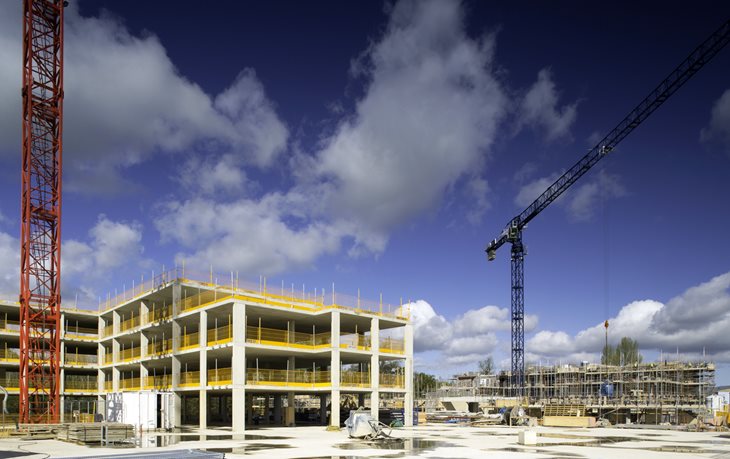Concrete Compass: Eurocode 2
Navigating to useful resources and guidance

On 30 November 2023 BSI formally published the 2nd generation Eurocode 2. The 2nd generation Eurocode 2 consists of BS EN 1992-1-1:2023 “Eurocode 2 : Design of concrete structures. General rules – rules for buildings, bridges and civil engineering structure” and BS EN 1992-1-2:2023 “Eurocode 2: Design of concrete structures. General rules – Structural Fire design”. In the 2nd generation Eurocode 2 both bridges and liquid retaining and containment structures are covered by BS EN1992-1-1 so there are no direct replacements for the current BS EN 1992-2 and BS EN 1992-3.
Whilst the National Foreword to the 2nd generation Eurocodes notes that the current Eurocode is the default code for use in the UK until its withdrawal in 2028, there is nothing stopping engineers using the 2nd generation with appropriate agreements and once required supporting information is published.
Guidance for how to design structures using 1st Generation Eurocode 2 is readily available, in the form of published documents (available in hard and soft copies), webinars and software. These resources will be amended to reflect 2nd Generation Eurocode 2, however, these updates are dependant on the release of the UK National Annex both to Eurocode 2 and the other related 2nd Generation Eurocodes.
This compass brings together our key guidance and resources to ensure that designers feel supported in their use of Eurocode 2, now and in the future.
Key resources
How to Design Concrete Structures using Eurocode 2 makes the transition to EC2 easier by drawing together information and commentary required for the design and detailing of typica l concrete elements.
Worked Examples to Eurocode 2 distils from Eurocode 2, other Eurocodes and other sources the material that is commonly used in the design of concrete framed buildings.
Properties of Concrete to Eurocode 2 covers the background to the use of concrete properties in design, and is structured to provide guidance on: The range of concrete properties required in the design process; How each property is determined in BS EN 1992-1-1; How the property can be measured; How the measured value may be used in design; Options for modifying the value of the property.
Concise Eurocode 2 summarises the reference material that will commonly be used in the design of reinforced concrete framed buildings to Eurocode 2. With extensive clause referencing, readers are guided through Eurocode 2 and other relevant Eurocodes. The publication, which includes design aids, aims to help designers with the transition to design to Eurocodes.
Concise Eurocode 2 for Bridges summarises the material that will be commonly used in the design of reinforced and prestressed concrete bridges using Eurocode 2. With extensive clause referencing, readers are guided through Eurocode 2, other relevant European standards and non-contradictory complementary information.
Introduction to Eurocode 2 on-demand webinar
This webinar introduces the basics and discusses some of the resources available to engineers looking to use the code.
Introduction to the second generation Eurocode 2
This webinar will look at some of the main changes introduced in the second generation Eurocode 2. Although the current Eurocode 2 will not be withdrawn until March 2028, the new Eurocode contains a significant number of developments which engineers will find of interest and might be considered for early adoption.
Rebar detailing to Eurocode 2 webinar
This webinar covers the basics of reinforced concrete detailing to Eurocode 2 and reviews the Standard Method of Detailing manual from the Institution of Structural Engineers. We will also look at the simplified rules for detailing beams and slabs.
Eurocode 2 training courses
The Concrete Centre provides two online training courses to assist with the design of concrete using Eurocode 2. These courses can be completed over a 12-week period and intakes for both courses are regularly opened throughout each year. The courses, 'Design and Detailing to Eurocode 2' and 'Advanced Design to Eurocode 2' provide an introduction and an advanced level of learning respectively.
For more information on current and future intakes, send an email to info@concretecentre.com
RC Spreadsheets, Version 4D
For the experienced engineer, the spreadsheets allow the rapid production of clear and accurate design calculations. For post-graduates and new engineers they encourage understanding of concrete design and help the gaining of experience by studying 'what if' scenarios. The individual user is able to answer their own questions by chasing through the cells to understand the logic used.
Extensive online reference materials
This website has significant information on the design to Eurocode 2, with extracts from our guidance, available free of charge. Visit the Codes section or see the quick links to the pages of guidance, below:
 Back to Concrete Compass main page
Back to Concrete Compass main page